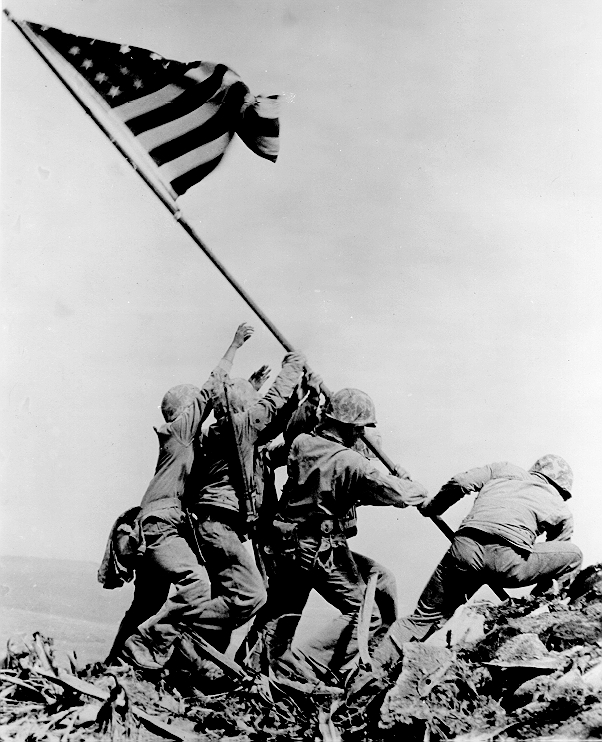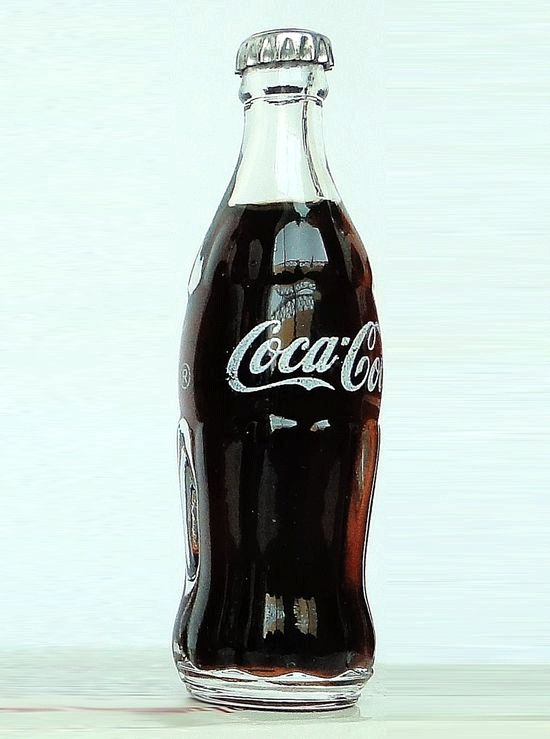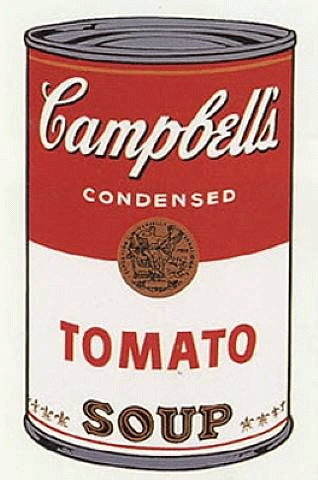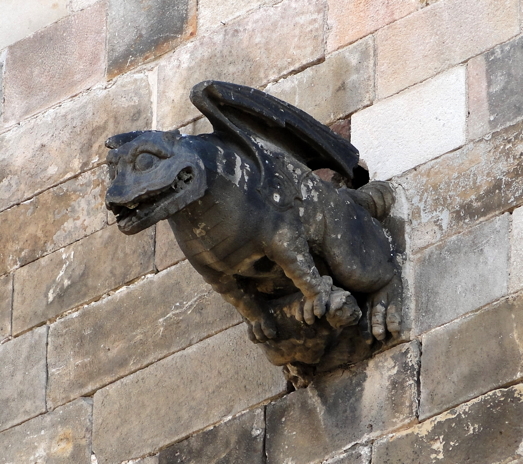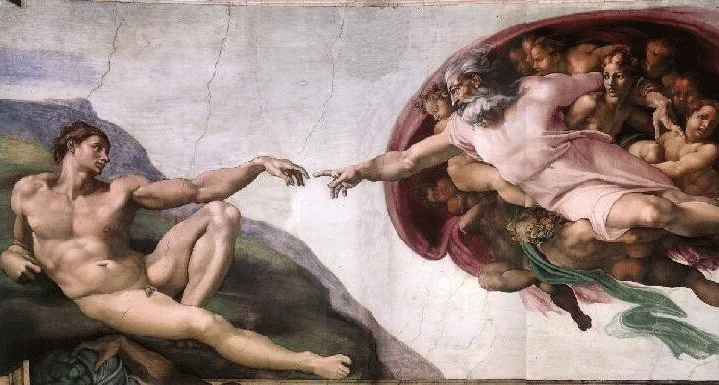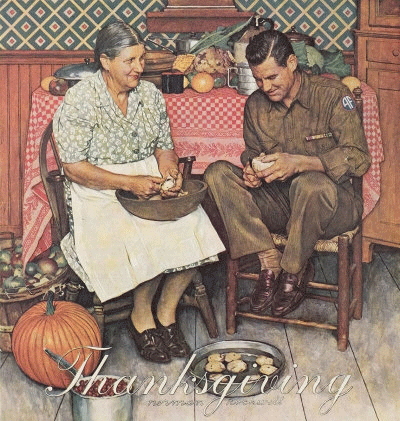Is it art or just craft?
by
Chuck Doswell
Posted: 10 January 2012 Updated: 21 January 2012: fixed the image display problem
This is my personal opinion. If you wish, you can send comments on this topic to me at cdoswell
& earthlink.net
(use the hyperlink or cut and paste, replacing _&_ with @). I
reserve the right to post your comments on this page and perhaps
respond to them, unless you give me a good reason why you want to
remain anonymous.
Introduction
My colleague and friend Robin Tanamachi
brought up something during our Friday evening get-together (the FAC -
Friday Afternoon Club) that hit a responsive note with my wife.
If there's any thread common to all the members of my family, it's
art. My daughter Heather has a B.A. in fine arts from OU in Art
and engages in many art forms including music (she has a heavenly
voice), my son Chad has a B.A. in fine arts from OU in Music
performance and has been a professional musician for most of his life,
my wife Vickie has been involved in various "crafts" for as long as
I've known her, and I've inherited the artistic leaning from my father
and his sisters, who were painters - I used to draw and paint, but
photography pretty much took over after my time in Vietnam.
At any rate, Robin's point was that the name "craft" often has been
applied to the creative work that women did as a way of implying that
it was something less than "real art". I always begin discussions
like this by going to the dictionary:
ART
- noun
1.
the quality, production, expression, or realm, according to aesthetic
principles, of what is beautiful, appealing, or of more than ordinary
significance.
2.
the class of objects subject to aesthetic criteria; works of art
collectively, as paintings, sculptures, or drawings: a museum of art;
an art collection.
3. a field, genre, or category
of art: Dance is an art.
4. the fine arts collectively,
often excluding architecture: art and architecture.
5. any field using the skills
or techniques of art: advertising art; industrial art.
CRAFT
- noun
1. an art, trade, or occupation
requiring special skill, especially manual skill: the craft of a mason.
2. skill; dexterity: The
silversmith worked with great craft.
3. skill or ability used for
bad purposes; cunning; deceit; guile.
4. the members of a trade or
profession collectively; a guild.
5. a ship or other vessel.
Curiously, craft is defined as an art! Hopefully, the definitions
inapplicable to this discussion can be recognized and ignored.
Trades like masonry certainly wouldn't be considered art
traditionally. I find it interesting that architecture is
excluded from the fine arts.
A listing of the traditional "arts" might include:
- Visual arts (painting, sculpture, photography, etc.)
- Drama - to include both creation and performance
- Music - to include both creation and performance
- Dance - to include both creation and performance
Opera combines visuals, drama and music. Dance and music
obviously can be combined into ballet. Thus, various combinations
of these elements are considered among the arts. Anyway, the
question of what is "true art" is one that's been debated for a long
time and I have no reason to believe that this essay is going to settle
the issue in a definitive fashion, but it's designed to express my
opinions, so here goes ...
On the distinction
Traditionally, visual arts have been limited to paintings and
sculpture. For a long time, photography was not considered art by
the arbitrary dictates of those who presumably "governed" the arts, and
then when it was conceded later that photography could
be true art, it was decided that only black-and-white photography was
art. A few years back, after it was granted that color images could
be true art, I was considering entering some photographs in an art show
and was informed that a 35 mm photograph couldn't be art - it had to be
medium format or larger!
There's an apparently clear distinction between snapshots ("Here's my
family with Mickey Mouse at Disneyland!") and artistic
photography. When I began storm chasing, this distinction seemed
to apply to what I was doing: one set of images documented the
storms I was seeing, and another set comprised what I called
"artsy-craftsy" images specifically intended to serve as artistic
images of what I was seeing on the Plains. With time, as I
learned more about photography, the distinction between these two sets
of images got pretty fuzzy and has disappeared for the most part by
now. There's a spectrum of intent that ranges from pure
"documentation" to pure "artistic visual imagery". I apply what
I've learned about craftsmanship using a camera to virtually all my photographs now.
I mention this because what happened to my
photography was that I had to become adept at the craft associated with
photography before I could use the camera as a medium of artistic
expression. In the same way that one has to learn the craft of
painting to become an artistic painter, or the craft of sculpture to
become an artistic sculptor, every art form involves
craftsmanship. You have to learn how to make the medium do what
you want to do. Without craftsmanship, I believe there can be no
art. Just throwing paint at a canvas, or knocking random chips
from stone doesn't create art, as I see it. Art has to involve
creation, not random accidents. But art is something more than craftsmanship.
Snapshots are justifiably not considered art because of the intent
of the photographer. The snapshot photographer has no intent to
express an explicit or implicit message inherent to the image.
What is the intent of the artist when applying the craft s/he has
learned to create a work of true art? In many cases, the goal is
to create an emotional response: joy, sorrow, peace, solemnity,
awe, nostalgia, anger, horror, excitement. If the artist produces
an emotional response in the viewer of his/her artwork, this is
considered a success.
In photography, the photojournalist may not be intending
to produce an emotional response - merely seeking documentation.
But some images succeed in creating an emotional response anyway.
Consider the iconic photo of the Marines raising the flag
on Mount Suribachi on the Pacific island of Iwo Jima during World War
II, taken by Joe Rosenthal:
This image's intent was purely for documentation, but the power of the
image has overcome the intentions of the photographer! Is this
art? I leave it up to my readers, but I have to say that it sure
looks like art to me! The same could be said of many of the
Pulitzer Prize winning photographs. It's conceivable that some
snapshots may transcend their intent, as well.
More on the distinction
OK - so far, so good - now, what about the work of tradespeople:
masons, silversmiths, furniture makers, architects, blacksmiths,
glassblowers, construction workers? There are many trades that
involve craftsmanship that has to be learned, often achieving a high
level only after years of hard work and devotion to the craft.
I'm going to provide a few examples of how it's at least possible to
see some of the work of tradespersons as art.
If human glassblowers were involved in producing bottles for soft
drinks, rather than machines, no one would be likely to single out a
particular soft drink bottle and call it a work of art. The goal
for the craftsman, if there were any, would be to produce thousands of
identical bottles that would be indistinguishable from those produced
by his fellow workers. But if we consider the coke bottle as an
icon, which it has become, then the image can indeed produce an
emotional response:
The person who designed this bottle was an artist, but the
glassblowers
who turned them out weren't even remotely interested in creating
art. The intent of the manufacturing was to provide thousands of
identical examples of a
recognizable product on the shelf. That's all. The coke
bottle has become iconic over
time, although it likely wasn't considered so at the time it was
introduced. In a similar vein, consider Andy
Warhol's painting of a soup can:
implicitly recognizes this aspect of commercial design. Some
designs become transcendent. The ordinary can be extraordinary if
we just look carefully.
Consider the hundreds of craftsmen who
produced the gargoyle sculptures on medieval cathedrals. These
people worked in total anonymity producing sculptures as decorations,
although perhaps some of them served such utilitarian purposes as
drains, albeit rather ornate drains. Is their work art?
Suppose you say these gargoyles are not
art because they're merely decorations on a building. If that's
so, what about Michaelangelo?
Generally, Michaelangelo is considered one of the world's great artists
for producing, among other art, the frescoes adorning the ceiling of
the Sistine chapel. These are almost certainly recognized
universally as true art, but are they not merely decorations on a
building? Objectively, what's the difference?
Another example of a blurred distinction is the famous "illustrator"
Norman Rockwell. His work adorned the covers of magazines
(notably, the Saturday
Evening Post)
depicting various aspects of life in America. The art snobs
generally denigrated his work as "mere illustration" and not genuine
art. What do you think of his work? He certainly was a
craftsman, and some of his images are now recognized as iconic.
Would you choose to call him an artist or relegate him to the lower
status of being just an illustrator?
My wife's art/craft
So long as I've known her, my wife Vickie has been heavily involved in
"crafts" such as needlework, knitting, macramé, tole painting,
dressmaking and sewing, etc. Right now she's deeply committed to paper crafts and scrapbooking,
to such an extent that she's even teaching classes in the topic.
Needless to say, she picked right up on what Robin was saying about
denigrating women's creative work as mere "craft" rather than
art. I've always seen Vickie's work as art, so I have no problem
with that. Why does something utilitarian, like a quilt or a
cookie box or a photo album, make its creation "just craft" and not
"true art"? The media used for such art have been used almost
exclusively by women as a way to be creative. Women also have
become photographers, sculptors, painters, singers, songwriters,
actors, etc. - all the traditional "art" media - and some are highly
successful contributing artists in those traditional media. I
won't even bother listing some examples of that - too obvious.
Nevertheless, we live in a society that persists in belittling the
abilities and accomplishments of women. Despite considerable
progress made in the USA and other societies, the persistent
stereotypes remain. The default assumption continues to be
applied - if a woman did it, it just can't be worth much. I can't
even imagine what it would be like to have to live with this attitude
for a lifetime. More progress is needed!
My wife now considers herself to be an artist, and I couldn't agree
more! I've felt that way all along. For years, Vickie
devalued her own abilities as just "crafts" and not art - why?
Because that's been the default assumption of the society in which she
was raised - she hasn't lived in a vacuum, after all! She's
finally overcome those externally-imposed constraints to assert her
artistic creativity, and I'm very proud of her for that. I don't
care what some art snobs might think - what Vickie does is art to me
and always has been!
Discussion
But what about these "homemaker" media? It seems the media are
the issue. Just as cameras at first were rejected as the medium
of an artist, these traditional crafts have been relegated to the
status of non-art. Is it conceivable that craftspersons using
these media really should be
considered artists? Not all of them, for sure. Mere craft
is still a worthwhile contribution, is it not? When my wife takes
an old can that originally
contained a whisky bottle and turns it into something very different
from its original form by employing her crafts, does the fact that it
still can serve a utilitarian purpose disqualify her creativity from
the realm of "true art"? Consider the examples I've
provided. Is it only art when the artist and the work become
famous? Is it only art when it's displayed in an "art"
museum?
It's my belief that craftsmanship on its own, however refined and
admirable, doesn't make the work into art. The intent of the
work's creator is a big part of the issue, but I think I've suggested
that this likely isn't the discriminating factor, either. It
seems that some creations achieve a status far beyond the intent of the
creator. Most anyone looking at it would say "Now that's
a work of art!" Some creations transcend their lowly utilitarian
purpose and become iconic - recognizable instantly and evocative of
emotions despite their seemingly humble origins. Some creators
simply churn out humdrum examples of their craft, being perfectly
suited to their modest goal of serving some purpose. Such
craftspersons are to be admired for their anonymous contributions to
everyone's well-being. Their creations are successful and useful
to society, but not art.
On the other hand, a few creators produce something very special - a
quality that we can all recognize when we see it - whatever their
intentions might be in creating it. Their work soars beyond the
humble medium and becomes true art. I don't know how I would
define it in mere words, so it seems my conclusion is: I don't know how to define the difference
between art and craft, but I know it when I see it!
Naturally, it's quite possible in this situation that there might be
some disagreement. Some work in some media are so obviously in
the category of art that no reasonable person could dispute its
status. But it's quite conceivable that in some cases, reasonable
people would disagree. This is a pretty unsatisfactory situation
for a scientist, but it seems inevitable that the boundary between art
and craft will continue to be a bone of contention. Since I can't
solve the problem definitively, this is where I'm going to have to
leave it.
